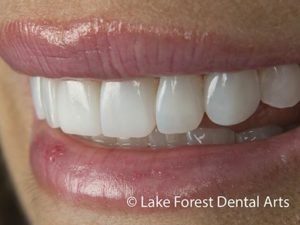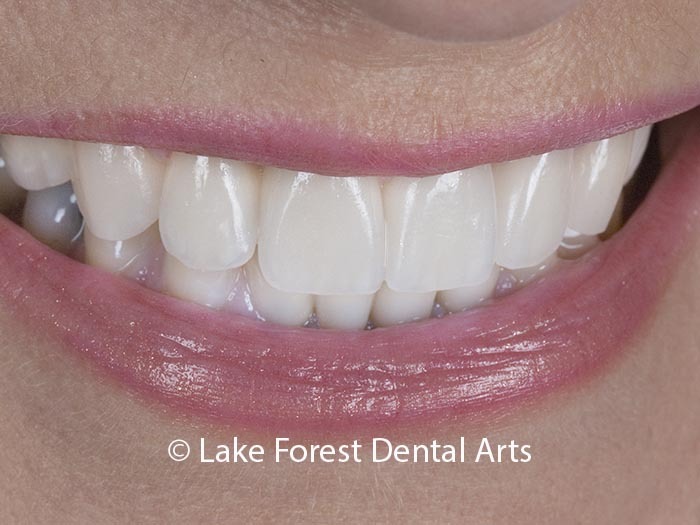
A common question that dentists receive is, “How long does a crown last?”. There are many factors that can affect how long a crown lasts. Service longevity of dentistry depends mostly on the quality of the dentistry, oral hygiene, and abuse to the restoration.
Crowns will last five years on the short end and 20 years or more if it is properly cared for. The average lifespan is 8 to 15 years. Higher quality versions can last up to 40 years.
Factors that Affect Dental Crown Lifespan
Quality of Your Restoration
The quality of crowns will vary greatly from dental office to office. A high quality crown will have features that allow it to last longer, to look better, or both.
How a crown fits and the design of the occlusion affect how long it lasts
How long the crown lasts is often related to the fit and how the bite is designed. Fit is determined mostly by the time, effort, and training of the dentist.
A high quality dentist will take more time and effort drilling and shaping smooth crisp margins for the new restoration to fit against. They will carefully position the margins underneath the gum for protection. They will use more expensive impression materials and ensure that the entire margin is captured in the impression.
Occlusion is the study of how teeth move against each other. Learning how to design the bite is a 4 year course in dental school. It teaches the dentist how to design the shape of the cusps so that they move harmoniously against the opposing teeth. If dentistry is placed without real regard for occlusion, both your new dental work and the opposing teeth will suffer and be more likely to break.
 Esthetic quality – How well it matches the other natural teeth
Esthetic quality – How well it matches the other natural teeth
The quality of the materials used and the talent level of the ceramist determine how natural it looks. High quality dentists will spend 100 times more for the restoration than other dentists. Patients are rarely given the option to choose what quality of lab will do their restoration.
Most master ceramists will not work with an average dentist. This is because the typical dentist doesn’t give the lab enough design or color matching information to create a perfect replica tooth.
How long a crown lasts also depends on how it looks long term. A lower quality crown will actually change color with age. It may also begin to show a dark edge.
Diet
There are two dietary considerations to remember. One, avoid hard or sticky foods that can dislodge dental fillings. Two, avoid foods that can promote gum problems or tooth decay. While dentistry doesn’t decay or suffer from periodontal disease, the natural tooth supporting it is still vulnerable.
Accidents
If you do experience trauma to the face, your crown may become damaged, loose, or dislodged.
Here are some common steps you should take if you experience an accident.
- Always retrieve dislodged fillings or caps. Remaking a cap will be just as costly as it was the first time it was placed.
- Contact your dentist immediately
- Use a dental cream to reattach the crown in its original position if you are traveling
Oral hygiene habits, tooth grinding, and other oral habits affect how long a crown will last
Getting regular cleanings and having good oral hygiene habits will help dentistry last longer. Bad oral habits such as biting your nails, chewing on ice, or grinding your teeth at night will harm all of your teeth including your dentistry. Voluntary and involuntary habits can increase the amount of wear on crowns. Wearing a night guard will limit the wear and tear of of grinding or clenching your teeth.
Age-related Factors
Many dental problems are age-related. If you are 65 or older, you are more likely to be taking medications that cause dry mouth. Decreased saliva flow can lead to tooth decay and gum disease. These dental problems may increase your risk of a dislodged crown.
How do I know if my crown needs replacing?
If your crown becomes decayed, chipped, or cracked, it will need to be replaced. Oral discomfort or pain may be a sign that there is an advancing infection under the porcelain cap. Left untreated, this can lead to a root canal infection.
Trauma or excessive bite loads due to grinding or poor occlusal design may cause a fracture and ultimately crown failure. When a fracture occurs, if the seal is broken or food starts to collect between your teeth, a new restoration is needed.
How are crowns replaced?
Most dental insurance companies include a maximum amount of coverage that typically includes costs for restorative treatments like a dental bridge. Dental crowns are considered restorative and necessary treatments, although they can also be done for cosmetic dentistry reasons.
The old cap will often be removed in sections unless it is on a dental implant. Once the old restoration and cement have been removed, your tooth structure will be examined. If the tooth is healthy, you can be fitted with a new porcelain or metal cap that sits near your gum line. The wait time for a new one to be made is usually a few weeks.
Dr. Fondriest is a Nationally recognized and highly sought after cosmetic dentist. He serves clients from throughout the United States

 Esthetic quality – How well it matches the other natural teeth
Esthetic quality – How well it matches the other natural teeth